Introduction
Heyo people! I'm Terathiel, occasionally known by other names, most of them silly. I've been playing Dota for what, bit under a year and a half? Across this time, I've played a variety of roles, but my favourite (and probably best) role is that of the carry. While I'm not the only carry player in the world and certainly not the best, I have a reasonable skill level and a firm grasp of the theory involved (yes there is theory. Dota has a surprising amount of homework!).
A lot of this guide will be copy-pasted from things I have previously written, but much of it will be new. It is designed for those who have a basic grasp of the game and want to expand their knowledge. Do be warned, there will be a lot of text but I will do my best to spice it up with pretty pictures.
I'm updating this for 6.87 because while nothing has really changed in terms of how a carry works, a lot of the carries themselves have changed and I've grown to have a better understanding of a lot of them now.
In this guide I will be discussing the theory behind playing a carry. This is going to be a lengthy guide which is not alt-tab friendly, so set yourself some time to read it. It will have numerous sections:
1) What makes a carry
In this section, I shall talk about damage steroids, scaling, and the difference between semicarries and carries, as well as carries and hard carries.
2) Overview of the carries
The second section will be divided into two sub-sections (hard carries and carries) so it doesn't go on so long. I will go over each carry individually, their abilities, their scaling and their features. The hard carry section will be ordered by lategame power, whilst the carry section will be ordered alphabetically by name. Carries are also given a score of five in different categories based upon their ability to fulfill that role. The categories are:
Lategame Scaling
Pushing
Durability
Snowballing
Farming Speed
Mobility
3) Playing a Carry: A Brief Overview
An insight into the decision making processes behind a carry, and a description of exactly what the role entails.
4) Farming: The Lane
Creep equilibrium, maximising last hits, staying alive.
5) Farming: The Jungle
Split-pushing, rotating through the jungle, the beauty of the Quelling Blade.
6) Picking the Right Carry
A brief section about when to pick what carry and avoiding counterpicks.
What Makes a Carry?
What makes a Hero a carry
Generally speaking, a 'carry' is a Hero whose abilities and skillset scales with items and/or stats. These are often referred to as 'damage steroids'. For example, let's look at the quintessential carry, the oft-reviled  Anti-Mage.
Anti-Mage.
He has a spell called 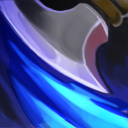 Mana Break, which is passive like most damage steroids. It burns 64 mana per hit from the target and deals damage to them based on mana burnt. To capitalise on this, you build a lot of attack speed on
Mana Break, which is passive like most damage steroids. It burns 64 mana per hit from the target and deals damage to them based on mana burnt. To capitalise on this, you build a lot of attack speed on  Anti-Mage (this also is affected by his Base Attack Time, or BAT, but more on that later).
Anti-Mage (this also is affected by his Base Attack Time, or BAT, but more on that later).  Mana Break also transfers to illusions, which is why you see so many professionals build
Mana Break also transfers to illusions, which is why you see so many professionals build  Manta Style on him.
Manta Style on him.
There are other kinds of damage steroids, too - they do not have to be right-click abilities. See  Skywrath Mage's
Skywrath Mage's 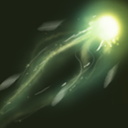 Arcane Bolt (though he isn't technically a carry, this ability does scale directly with him meaning that if you get enough of a lead it's easy to maintain that lead) and
Arcane Bolt (though he isn't technically a carry, this ability does scale directly with him meaning that if you get enough of a lead it's easy to maintain that lead) and  Tinker's
Tinker's  Rearm, which allows him to refresh the cooldown on all his nukes and deal more damage.
Rearm, which allows him to refresh the cooldown on all his nukes and deal more damage.
Generally, scaling abilities can often be determined by a multiplier in them, or a % based effect.
The Different Kinds of Scaling
Back to right-click steroids. There are three kinds of scaling - attack speed scaling, damage scaling and attribute scaling. Some abilities, like critical strike effects, fit into both categories.
Attack speed scaling is clearly visible by on-attack effects which usually have a set number to them -  Lifestealer's
Lifestealer's  Feast and
Feast and  Spectre's
Spectre's 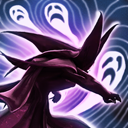 Desolate, as well as the aforementioned
Desolate, as well as the aforementioned  Mana Break, are both attack speed scaling abilities. There is usually a point in the game where the ratio of attack speed to enemy HP pool is at its peak. After this point, they will begin to fall off. To capitalise on these abilities, you want to build attack speed.
Mana Break, are both attack speed scaling abilities. There is usually a point in the game where the ratio of attack speed to enemy HP pool is at its peak. After this point, they will begin to fall off. To capitalise on these abilities, you want to build attack speed.
Damage scaling abilities are abilities which scale with the Hero's damage. These abilities often have a cooldown such as  Weaver's
Weaver's 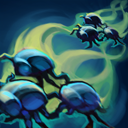 Geminate Attack. These are much rarer. Damage scaling abilities can also take the form of bonuses to attack speed, such as
Geminate Attack. These are much rarer. Damage scaling abilities can also take the form of bonuses to attack speed, such as  Fervor from
Fervor from  Troll Warlord and
Troll Warlord and  Night Stalker's
Night Stalker's 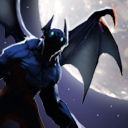 Hunter in the Night. To make the most of these abilities, you build flat damage. On Heroes with an innately high attack speed due to their passives/skills, you can also build on-attack proc effects like
Hunter in the Night. To make the most of these abilities, you build flat damage. On Heroes with an innately high attack speed due to their passives/skills, you can also build on-attack proc effects like  Mjollnir or
Mjollnir or  Monkey King Bar.
Monkey King Bar.
NOTE: Despite being scaling,  Bounty Hunter's
Bounty Hunter's  Jinada is NOT a damage steroid, the cooldown is far, far too long. It is better classified as a scaling nuke which deals physical damage. By extension,
Jinada is NOT a damage steroid, the cooldown is far, far too long. It is better classified as a scaling nuke which deals physical damage. By extension,  Bounty Hunter is not a carry.
Bounty Hunter is not a carry.
Attribute scaling is an ability that scales with the Hero's attributes. Prime examples are Outworld Devourer's  Arcane Orb and
Arcane Orb and  Riki's Backstab, which both deal damage based upon the mana pool and agility of the Hero, respectively. Illusions come under this category.
Riki's Backstab, which both deal damage based upon the mana pool and agility of the Hero, respectively. Illusions come under this category.
Carries and Semicarries?
In its most basic form, the difference between a carry and a semicarry is this: carries scale with items, semicarries scale with levels. While semicarries often gain a lot of benefit from items, a semicarry is more level-reliant than item-dependant. A level seven  Zeus with
Zeus with  Aghanim's Scepter and
Aghanim's Scepter and  Refresher Orb is a lot less effective than a level nineteen Zeus with no items. Some Heroes can be both carry and semicarry, such as
Refresher Orb is a lot less effective than a level nineteen Zeus with no items. Some Heroes can be both carry and semicarry, such as  Shadow Fiend, who will go to the midlane, achieve a level advantage and allow his nukes to snowball him into a powerful right clicker. Many semicarries also have right-clicking potential, but not to the extent a carry does, such as
Shadow Fiend, who will go to the midlane, achieve a level advantage and allow his nukes to snowball him into a powerful right clicker. Many semicarries also have right-clicking potential, but not to the extent a carry does, such as  Queen of Pain and
Queen of Pain and  Viper.
Viper.
The Difference between a Carry and a Hard Carry
This is a crucial difference of deciding when to end the game. Before the update to this guide, I discussed the idea that there are three criteria a carry must fulfill in order to be considered a 'hard carry'. Well, it wasn't entirely wrong, but it left a lot of unanswered questions. So the altered list is here;
1) They must have enough DPS. A carry that doesn't deal damage is something of a liability and is the reason that they drop off.
2) They must have lategame utility. This can be something as simple as split-push, counterpush, or it can be a complex series of abilities that work to control teamfights.
3) They must have presence. This sort of ties into the other two; but it also encompasses the kiting issue. Hard carries aren't unkiteable, no matter how much I like to pretend otherwise; you've got  Glimmer Cape,
Glimmer Cape,  Ghost Scepter and
Ghost Scepter and  Scythe of Vyse to ruin your day. Presence refers to the idea that you can't be ignored, in fights or in anything else. Ignore
Scythe of Vyse to ruin your day. Presence refers to the idea that you can't be ignored, in fights or in anything else. Ignore  Wraith King in the lategame, he's going to be very, very hard to kill, but is easily kited and if he isn't acting as a sponge, then he isn't doing his job. Ignore
Wraith King in the lategame, he's going to be very, very hard to kill, but is easily kited and if he isn't acting as a sponge, then he isn't doing his job. Ignore  Faceless Void, you're going to automatically lose that fight. It means, essentially, that the enemy team has to expend a disproportionate amount of resources to deal with you.
Faceless Void, you're going to automatically lose that fight. It means, essentially, that the enemy team has to expend a disproportionate amount of resources to deal with you.
For the sake of explanation, I will compare four Heroes whose abilities encompass much of the different kinds of carry abilities you will find: a hard carry,  Spectre, and three normal carries,
Spectre, and three normal carries,  Lifestealer,
Lifestealer,  Weaver and Outworld Devourer.
Weaver and Outworld Devourer.
 Spectre is an illusion Hero, as her illusions gain her
Spectre is an illusion Hero, as her illusions gain her  Desolate ability. This ability is an attack speed scaling ability which due to the illusions carrying it, and
Desolate ability. This ability is an attack speed scaling ability which due to the illusions carrying it, and  Spectre's mediocre attack speed, peaks very late in the game. Her ultimate,
Spectre's mediocre attack speed, peaks very late in the game. Her ultimate, 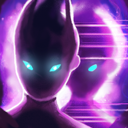 Haunt, also summons an illusion at all of her enemies which contributes to a huge chunk of her damage. Finally,
Haunt, also summons an illusion at all of her enemies which contributes to a huge chunk of her damage. Finally,  Dispersion deals more damage the higher your HP pool, encouraging many
Dispersion deals more damage the higher your HP pool, encouraging many  Spectres to build tanky. These three abilities combine to fulfill criteria 1. To fulfill criteria 2,
Spectres to build tanky. These three abilities combine to fulfill criteria 1. To fulfill criteria 2,  Spectre uses
Spectre uses  Spectral Dagger to move around a fight and keep in position, and
Spectral Dagger to move around a fight and keep in position, and  Dispersion also keeps her alive. The combination of
Dispersion also keeps her alive. The combination of  Spectral Dagger's powerful slow/speed boost, the massive radius of damage reflection from
Spectral Dagger's powerful slow/speed boost, the massive radius of damage reflection from  Dispersion, and the high speed of illusions from
Dispersion, and the high speed of illusions from  Haunt, make Spectre extremely difficult to kite, fulfilling criteria 3.
Haunt, make Spectre extremely difficult to kite, fulfilling criteria 3.
 Lifestealer also has an attack speed scaling ability in Feast which scales with the enemy's HP pool, allowing it to maintain high effectiveness throughout, and also possesses a damage scaling ability in the form of
Lifestealer also has an attack speed scaling ability in Feast which scales with the enemy's HP pool, allowing it to maintain high effectiveness throughout, and also possesses a damage scaling ability in the form of  Rage. These two abilities make him a high damage target His
Rage. These two abilities make him a high damage target His 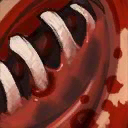 Open Wounds slow, spell immunity from
Open Wounds slow, spell immunity from  Rage, ambush powers from
Rage, ambush powers from 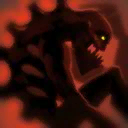 Infest and the life leech from
Infest and the life leech from  Feast all combine to allow him to fulfill criteria 2. However,
Feast all combine to allow him to fulfill criteria 2. However,  Lifestealer is considered one of the most easily kiteable Heroes in the game; while he does have a powerful slow, he is melee, does not usually build a
Lifestealer is considered one of the most easily kiteable Heroes in the game; while he does have a powerful slow, he is melee, does not usually build a  Yasha for extra speed, and the presence of
Yasha for extra speed, and the presence of  Ghost Scepters and
Ghost Scepters and  Force Staffs will ruin his day. He does not fulfill criteria 3 and cannot be a hard carry.
Force Staffs will ruin his day. He does not fulfill criteria 3 and cannot be a hard carry.
 Weaver, conversely, is utterly unkiteable.
Weaver, conversely, is utterly unkiteable.  Shukuchi alone fulfills criteria 3. He is also able to move around a fight, being extremely elusive and hard to kill due to
Shukuchi alone fulfills criteria 3. He is also able to move around a fight, being extremely elusive and hard to kill due to  Shukuchi and
Shukuchi and  Time Lapse. However, his damage steroid,
Time Lapse. However, his damage steroid,  Geminate Attack, is very weak and does not give him nearly as much damage as he needs to be a hard carry.
Geminate Attack, is very weak and does not give him nearly as much damage as he needs to be a hard carry.
Outworld Devourer certainly possesses the damage -  Arcane Orb and
Arcane Orb and 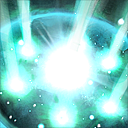 Sanity's Eclipse are both attribute scaling abilities that eat faces. He is also unkiteable, being ranged, fast and almost always building
Sanity's Eclipse are both attribute scaling abilities that eat faces. He is also unkiteable, being ranged, fast and almost always building  Rod of Atos and
Rod of Atos and  Scythe of Vyse. However, he is squishy, having little HP, and if you can get a silence off on him his damage shuts down. He fulfills criteria 1 and 3, but not 2.
Scythe of Vyse. However, he is squishy, having little HP, and if you can get a silence off on him his damage shuts down. He fulfills criteria 1 and 3, but not 2.
Hero Overview - Hard Carries
I'm going to scale this section in order of lategame dominance, because there is a clear hierarchy of hard carries and who carries hardest - Dota's version of comparing sizes. A lot of the ranking is based upon opinion, so do be aware of that.
 1. Faceless Void
1. Faceless Void
At the top of the list we have Faceless Void, a great all-purpose hero with high impact at all stages of the game. Alone of hard carries, he has rather low damage;  Time Lock only adds an average of 31.25 magical damage per attack, as opposed to the steroids you'll see later that can almost triple the damage output of your hero. Void carries hard, not just on his own, but because he has amazing combo potential.
Time Lock only adds an average of 31.25 magical damage per attack, as opposed to the steroids you'll see later that can almost triple the damage output of your hero. Void carries hard, not just on his own, but because he has amazing combo potential. 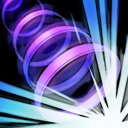 Time Walk makes it incredibly hard to kill him as he backtracks damage, while
Time Walk makes it incredibly hard to kill him as he backtracks damage, while 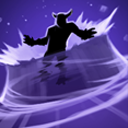 Time Dilation and
Time Dilation and  Chronosphere are hugely disruptive influences that ensure you can't possibly ignore him. In complete contrast to his pre-rework state, the new
Chronosphere are hugely disruptive influences that ensure you can't possibly ignore him. In complete contrast to his pre-rework state, the new  Faceless Void thrives in extended fights, applying a constant
Faceless Void thrives in extended fights, applying a constant  Radiance burn, freezing cooldowns, bashing everyone in sight and having that final trump card in his ultimate. Add in a
Radiance burn, freezing cooldowns, bashing everyone in sight and having that final trump card in his ultimate. Add in a  Manta Style for split-pushing, and you've got a very potent tool on your hands.
Manta Style for split-pushing, and you've got a very potent tool on your hands.
Difficulty: 5/10. Faceless Void is a rather forgiving Hero, with good base damage, decent farm speed and being tanky enough to eat up most attacks and still (time) walk away from it.
Lategame Scaling: 5/5
Pushing: 3/5
Durability: 4/5
Snowballing: 4/5
Farming Speed: 3/5
Mobility: 4/5
 2. Medusa
2. Medusa
Coming a narrow second to Faceless Void is Medusa, considered the most vegetative Hero in the game. Medusa is a lategame siege machine, with her insane survivability and huge multi-target damage; however, her 1v1 potential is very weak.
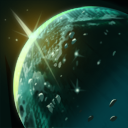 Mana Shield
Mana Shield and
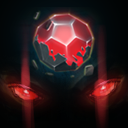 Stone Gaze
Stone Gaze make her obscenely difficult to take down, and since her area damage with
 Split Shot
Split Shot is truly frightening, you can't really ignore her either. While she is kind of kiteable, she is more than content to just hit the enemy team's buildings, being a frontliner they simply can't get past.
Difficulty: 5/10. Medusa's natural survivability and few actives make her easy to play, however it can be very tempting to try and fight before you are ready. For this reason, although she is not hard to play at all, Medusa is not recommended for newer players.
Lategame Scaling: 5/5
Pushing: 4/5
Durability: 5/5
Snowballing: 1/5
Farming Speed: 4/5
Mobility: 1/5
 3. Spectre
3. Spectre
Falling in just behind Medusa is the efflorescent Spectre, a hard carry with the worst lane presence in the game but an excellent midgame and nigh-unstoppable lategame. She's easily the tankiest hero in Dota, with a vast plethora of survivability tools, and
 Dispersion
Dispersion meaning that if you're taking damage, you're also dishing out a huge amount too. With
 Radiance
Radiance and
 Haunt
Haunt as well as
 Desolate
Desolate disintegrating any isolated hero, ignoring
 Spectre
Spectre will also result in a lost fight. While her push is weak given her abysmal right-clicks, Spectre presents an insurmountable obstacle and a teamfight force that causes absolute chaos among the enemy.
Difficulty: 6/10. The hardest part of Spectre is the lane, which will be heavily contested in a pub and requires you to play safe and farm quickly. Aside from this, she almost pilots herself, with only the cooldown of
 Haunt
Haunt requiring management.
Lategame Scaling: 5/5
Pushing: 2/5
Durability: 5/5
Snowballing: 2/5
Farming Speed: 2/5 if going Radiance, 1/5 otherwise
Mobility: 3/5
_________________________
 4. Terrorblade
4. Terrorblade
A long way down from the first three sit the illusion Heroes, of whom Terrorblade is first and foremost. Terrorblade's role is as a dedicated pusher - he can both split push and deathball with dreadful efficiency, and with
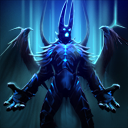 Metamorphosis
Metamorphosis up is the fastest early game and the fastest lategame pusher, bar none. Not even
 Tiny
Tiny. While innately extremely squishy, his damage is so high that you can purchase four dedicated survival items and still be the highest DPS hero in the game. And you should definitely do this.
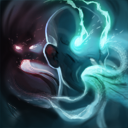 Sunder
Sunder, while unreliable, is a failsafe that forces the enemy team to often play inefficiently so as not to get punished by it. Finally,
 Reflection
Reflection, aside from being a huge area slow, has the added benefit of not only spawning full-damage illusions of every enemy hero, but also stealing any auras they have for the skill's duration. Despite having a great lategame to fall back on,
 Terrorblade
Terrorblade is perfectly happy taking the Aegis and ending the game at 20 minutes - sadly, this requires more team coordination than solo queue can really muster.
Difficulty: 8/10. Terrorblade appears deceptively easy but his skill cap is extremely high and requires good micromanagement, excellent positioning and map awareness.
Lategame Scaling: 5/5
Pushing: 5/5
Durability: 3/5
Snowballing: 4/5
Farming Speed: 5/5
Mobility: 2/5
 5. Morphling
5. Morphling
One of the most unique carries out there, Morphling is not directly an illusion Hero, but the effects of his spells make him a stat Hero, and as a result even the illusions provided by a
 Manta Style
Manta Style do a huge amount of damage. The ability to blow up any one target with
 Ethereal Blade
Ethereal Blade and
 Adaptive Strike
Adaptive Strike is incredibly potent, and Morphling continues to pump out huge sustained damage while being incredibly frustrating to kill due to his constant stat shifting. Our watery friend also has the added benefit of being the best lategame rat, with Replicate making it basically impossible to catch him out and his high damage melting towers.
Difficulty: 7/10. Morphling's skillset can be confusing and often overwhelming, and is not recommended for newer players.
Lategame Scaling: 5/5
Pushing: 4/5
Durability: 4/5
Snowballing: 4/5 if going Ethereal Blade, 3/5 otherwise
Farming Speed: 4/5 with an Axe on your team, 3/5 otherwise
Mobility: 3/5
 6. Tiny
6. Tiny
Like Morphling, Tiny does not have any innate illusion-making abilities, however a large chunk of his damage will come from a
 Manta Style
Manta Style. The Avalanche and Toss combo is a massive lategame nuke, and
 Grow
Grow, especially with the added cleave from
 Aghanim's Scepter
Aghanim's Scepter, make Tiny's right-clicks something to be feared, especially once he has some attack speed. His damage, high against both heroes and towers, means that ignoring him results in a very wiped base, and high strength gain combined with
 Craggy Exterior
Craggy Exterior makes him a tough prospect to bring down. With Boots of Travel, Grow, and Manta Style, Tiny reaches an incredible 489.5 movement speed, and with the added range from Aghanim's Scepter make him almost unstoppable. His synergy with
 Io
Io is worth noting - this allows Tiny to come online much earlier than he normally would, and gank globally.
Difficulty: 6/10. Tiny is not difficult, but is vulnerable to harass early on due to his nonexistent armour. Again, a balance of farming and fighting is required, as Tiny has a lot of early-game damage. The Avalanche + Toss combo does require some practice to pull off, so be aware.
Lategame Scaling: 5/5
Pushing: 4/5
Durability: 4/5
Snowballing: 3/5
Farming Speed: 4/5
Mobility: 2/5
 7. Chaos Knight
7. Chaos Knight
Coming in at #7 is Chaos Knight, the plural term of which is a '********'. He is an illusion Hero whose illusions have a low uptime but a ridiculous effect on the game. They deal 100% of his damage. And he has four of them.
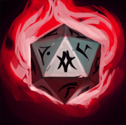 Chaos Strike
Chaos Strike, his passive, ensures that he has all the lategame damage he'll ever need (remember that illusions can crit!). He is one of the game's tankier Heroes, and the illusion confusion can make it hard to find the real one - combine this with the fact that nobody wants to go near a lategame Chaos Knight and he has more than enough presence.
 Reality Rift
Reality Rift,
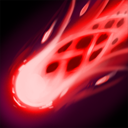 Chaos Bolt
Chaos Bolt and his naturally high speed mean that you'll have a very hard time kiting Chaos Knight.
Difficulty: 4/10. While it can be hard to farm with him, Chaos Knight's hardest part is managing your mana. For this reason, I can recommend having a
 Crystal Maiden
Crystal Maiden on the team.
Lategame Scaling: 5/5
Pushing: 3/5 (due to the long cooldown on his ultimate)
Durability: 3/5
Snowballing: 3/5
Farming Speed: 2/5
Mobility: 3/5
 8. Phantom Lancer
8. Phantom Lancer
Dubbed 'Cancer Lancer' long ago, Azwraith is an illusion-based Hero who can be extremely elusive and hard to track down. While each illusion is weak, en masse they are a vast armada that pulls apart towers slowly but surely. The size of the army means that tracking down the real Lancer, especially with dispels from
 Manta Style
Manta Style and
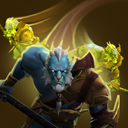 Doppelganger
Doppelganger, is a frustrating effort without counterpicks, and ignoring him allows PL to put his mana burn to work, slowing enemies and impeding spell casting.
Difficulty: 6/10. A lot of Phantom Lancer is 'right-click and forget', but Doppelganger has a lot of applications which add depth to the Hero.
Lategame Scaling: 5/5
Pushing: 3/5
Durability: 2/5
Snowballing: 4/5
Farming Speed: 3/5
Mobility: 2/5
 9. Naga Siren
9. Naga Siren
Want to hear a joke? Naga in a manfight. All jokes aside, Naga Siren is the most splitpush-orientated of the illusion Heroes, but as a result suffers from relatively weak combat capabilities - however she still outclasses most other Heroes with ease.
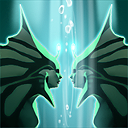 Mirror Image
Mirror Image and Riptide give her considerable damage, and the illusion confusion factor as well as her excellent stat gain and 'oh-****' button in
 Song of the Siren
Song of the Siren make Naga incredibly frustrating to actually kill. She'll get outcarried in a full-on fight by a lot of heroes, but you're causing too much of a disruption with relentless splitpushing to allow that fight to happen. Very similar to
 Terrorblade
Terrorblade in abilities and role, but Naga focuses more on slowly strangling the enemy as opposed to blasting apart buildings in bursts.
Difficulty: 8/10. More micro-intensive than Terrorblade, but much more forgiving. However, she does require good micromanagement to farm fast, as Naga is a very fast farmer if she gets a well-timed
 Radiance
Radiance.
Lategame Scaling: 5/5
Pushing: 5/5
Durability: 4/5
Snowballing: 2/5
Farming Speed: 5/5
Mobility: 2/5
____________________
 10. Luna
10. Luna
Coming in a step down from the illusion Heroes is the lovely Luna Moonfang. While she also has illusion synergy in
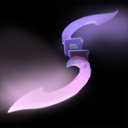 Moon Glaives
Moon Glaives, her illusions do not provide a large amount of her damage and as such she does not possess as much lategame potential. It is worth noting that Luna is a good counter to illusions, though, as she can cut them down very fast, getting rid of a lot of her enemy's damage.
 Moon Glaives
Moon Glaives is such a potent damage steroid that Luna barely has to build any damage (instead focusing on survivability and utility), and the bouncing effect means that once the tier 3 tower is down, the barracks will follow in seconds.
Difficulty: 7/10. Luna requires careful balancing of farm and fight and her peaking is very unusual - at level 7, her nukes are at their most effective, and as she can generally outfarm other carries you should attempt to push your advantage once you have a significant gold lead. This lends her to having a deceptively high skill cap.
Lategame Scaling: 4/5
Pushing: 4/5
Durability: 3/5
Snowballing: 3/5
Farming Speed: 5/5
Mobility: 3/5
 11. Lone Druid
11. Lone Druid
Bear? BEAR! Lone Druid's carry potential comes from the fact that he is basically two Heroes - however contrary to popular belief it is the Druid himself that is the hard carry. Both bear and druid have extremely fast attack speed and high damage, and both also have high health and armour after some items. The fact that they are basically both permahasted also means that it's incredibly hard to kite them. However, as the game goes longer, the bear gets nuked down faster, and so Lone Druid eventually experiences a dropoff.
Difficulty: 8/10. Very micro-intensive as a Hero and you have to be very careful not to feed your bear, as it has a 300 gold bounty.
Lategame Scaling: 4/5
Pushing: 4/5
Durability: 4/5
Snowballing: 3/5
Farming Speed: 3/5
Mobility: 3/5
 13. Troll Warlord
13. Troll Warlord
Troll Warlord is probably the game's best manfighter. He passively reaches the maximum attack speed, meaning that stats and durability items alone can make him a monstrous DPS machine. Constant bashes and the application of miss chance can make a mess in teamfights, and when it comes to taking towers, Troll is one of the best.
Difficulty: 4/10. Troll isn't hard to play and doesn't require fast reflexes - just a right mouse button and an R key.
Lategame Scaling: 4/5
Pushing: 4/5
Durability: 4/5
Snowballing: 5/5
Farming Speed: 3/5
Mobility: 3/5
 14. Anti-Mage
14. Anti-Mage
Probably the most infamous carry in Dota, Anti-Mage is a hard carry who, unlike most, peaks in the late midgame. However, his skillset and item builds certainly fulfill all the criteria to make him a force in the lategame - low BAT combined with
 Mana Break
Mana Break and
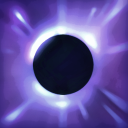 Mana Void
Mana Void grant him insane burst potential, while a
 Heart of Tarrasque
Heart of Tarrasque and Spell Shield give him the survivability he needs to be a disruption and dangerous splitpusher.
 Blink
Blink and a high speed thanks to
 Manta Style
Manta Style make kiting Anti-Mage a daunting prospect.
Difficulty: 6/10. Anti-Mage needs a lot of farm, and he needs it FAST. This requires an Anti-Mage player to be good at last-hitting and even better at navigating the jungle. For this reason, he is not a Hero that lends himself to new players - they are better off trying
 Troll Warlord
Troll Warlord.
Lategame Scaling: 4/5
Pushing: 4/5
Durability: 3/5
Snowballing: 2/5
Farming Speed: 5/5
Mobility: 5/5
 15. Phantom Assassin
15. Phantom Assassin
The softest of the hard carries, Phantom Assassin is a midgame fighter whose damage scales her seamlessly into the lategame.
 Coup de Grace
Coup de Grace coupled with high attack speed granted by
 Blink Strike
Blink Strike give her a lot of burst damage, whilst
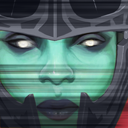 Blur
Blur and a purchase of
 Satanic
Satanic give Mortred the teamfight presence she needs. As the name would suggest,
 Blink Strike
Blink Strike makes it hard to kite her, especially when combined with
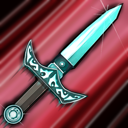 Stifling Dagger
Stifling Dagger. 6.87 note: PA has been nerfed so hard that I wouldn't hesitate to call her the worst hero in Dota at the moment.
 Abyssal Blade
Abyssal Blade, previously her core of core items, now gives so little damage that it's honestly best to go a
 Manta Style
Manta Style and
 Eye of Skadi
Eye of Skadi build instead, which then begs the question of why didn't you pick
 Luna
Luna or something? Seriously, RIP this hero until further notice. Could've been good.
Difficulty: 5/10. Phantom Assassin isn't difficult to manage, but requires good decision making to succeed as.
Lategame Scaling: 4/5
Pushing: 2/5
Durability: 3/5
Farming Speed: 4/5
Snowballing: 4/5
Mobility: 4/5
Hero Overview - Other Carries
 Alchemist
Alchemist
This obnoxious **** has ruined more games of Dota than any other hero, and I'm including ****ing  Techies in this. Given freefarm, a 10 minute Radiance will **** everything up. He vacuums all the farm on the map, scales poorly into the lategame due to a ****ty steroid and even worse stats, and needs 15k gold to outcarry his opposition... which unfortunately he can do. The only person that has fun in an
Techies in this. Given freefarm, a 10 minute Radiance will **** everything up. He vacuums all the farm on the map, scales poorly into the lategame due to a ****ty steroid and even worse stats, and needs 15k gold to outcarry his opposition... which unfortunately he can do. The only person that has fun in an  Alchemist game is the person playing the hero.
Alchemist game is the person playing the hero.
DIFFICULTY: 3/10. Alch is almost completely braindead. Even when pitted against a much better mid, he'll simply spam  Acid Spray and STILL ruin all your fun. Then, of course, it's just pushing lanes and being annoying until you can finally punch your opponents. Ugh.
Acid Spray and STILL ruin all your fun. Then, of course, it's just pushing lanes and being annoying until you can finally punch your opponents. Ugh.
Lategame Scaling: 3/5
Pushing: 3/5
Durability: 3/5
Snowballing: 4/5
Farming Speed: 5/5
Mobility: 2/5
 Clinkz
Clinkz
Well. Now that I've got my Alchemist-rage out of the way, Clinkz is a ganking-style carry who can snowball well out of control with relative ease. His three damage steroids of
 Strafe
Strafe,
 Searing Arrows
Searing Arrows and
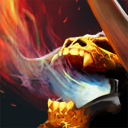 Death Pact
Death Pact make him a force to be reckoned with in the early-game, and while he drops off as the game goes into the late stages Clinkz is still an excellent tower pusher and ganker.
DIFFICULTY: 6/10. His low base damage and horrendous attack animation, as well as his farm dependancy and lack of a farming mechanic, mean that a Clinkz player has to be good at last hitting. So as not to waste
 Death Pact
Death Pact's limited duration, he must also have good map awareness.
Lategame Scaling: 3/5
Pushing: 4/5
Durability: 2/5
Snowballing: 5/5
Farming Speed: 2/5
Mobility: 2/5
 Drow Ranger
Drow Ranger
Ahh, Drow. A Hero with the stigma of being played by noobs... to be fair, it's a deserved stigma. However, due to her amazing aura, with its synergy with every ranged Hero ever (but especially
 Visage
Visage), Drow does see competitive play. She is possessed of a powerful slow, a great silence, and high early-game DPS. Drow's weakness is an incredible vulnerability to gap closers, even more so than Sniper, and that she drops off HARD after 25 minutes. Popular if you want to end the game early.
DIFFICULTY: 3/10. I give it an extra point because a Drow with **** positioning skills just feeds. She's painfully easy to play.
Lategame Scaling: 1/5
Pushing: 3/5
Durability: 1/5
Snowballing: 3/5
Farming Speed: 1/5
Mobility: 1/5
 Ember Spirit
Ember Spirit
Ember Spirit is a rampage Hero. This means, as you'd expect, that he is a Hero that gets a lot of rampages through
 Sleight of Fist
Sleight of Fist. This single ability, and to some extent the rest of his skillset, gives him incredible control in lategame teamfights and the ability to burst down entire teams in a single cast. However, he's squishy, vulnerable to silences, and farms rather slowly even with a Battlefuy.
DIFFICULTY: 7/10. There is no micro in Ember, but his combo requires quick reflexes to pull off correctly. A pretty fun Hero - if you like
 Invoker
Invoker, Ember may be worth a try.
Lategame Scaling: 4/5
Pushing: 2/5
Durability: 1/5
Snowballing: 4/5
Farming Speed: 2/5
Mobility: 4/5
 Lifestealer
Lifestealer
One of the simplest concepts in the game personified, Lifestealer is a Hero you right-click on a target, get kited for 5 minutes, and perhaps snag a kill or two before they FINALLY kill you. It sounds all doom and gloom, but while Lifestealer is very easily kited he's relatively tanky and does a lot of damage. Maximising attack speed and lockdown is key to succeeding as him, and you have to make the most of your time in
 Rage
Rage.
DIFFICULTY: 3/10. Really easy, but it can be frustrating being kited half your life.
Lategame Scaling: 4/5
Pushing: 1/5
Durability: 4/5
Snowballing: 2/5
Farming Speed: 2/5
Mobility: 1/5
 Lycan
Lycan
Dog? DOOOOOOOOOOG! Lycan is a super-fast racing car dog who is often seen split-pushing your towers. However, with a few combat items he makes a potent carry too, with his high chance to crit and all the bonuses from
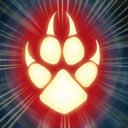 Feral Impulse
Feral Impulse. Lycan is a midgame fighter that drops off towards the lategame, but his incredible push potential is relevant at all stages of the game. Can solo Roshan from early on, giving your team a gold advantage - make sure to utilise this.
DIFFICULTY: 5/10. Some basic micromanagement required, and limited map awareness, however Lycan is ultra-fast and tanky as well, making him rather forgiving.
Lategame Scaling: 3/5
Pushing: 5/5
Durability: 3/5
Snowballing: 3/5
Farming Speed: 3/5
Mobility: 3/5
 Meepo
Meepo
Meepo is often compared with Invoker as to the hardest Hero in the game, but playing him is really just an extension of playing an illusion Hero. A big extension, sure, but similar skills apply. Meepo's long disables, high nuke damage and eventual right-click potential make him a deadly foe in the right hands, however he is most certainly NOT for anyone on the low side of 500 hours!
DIFFICULTY: 10/10. When playing Meepo, you literally have to manage 5 Heroes at once, plus a bunch of active items. Unless you are certain you can play him, he's probably best left to practice in bots until he is learnt.
Lategame Scaling: 3/5
Pushing: 5/5
Durability: 3/5
Snowballing: 4/5
Farming Speed: 5/5
Mobility: 4/5
Outworld Devourer
Outworld Devourer
Possessed of the game's coolest voice acting, BrO-D is a lane dominator who transitions into a powerful right clicker due to the huge amounts of Pure damage from
 Arcane Orb
Arcane Orb. Outworld Devourer comes online rather quickly, around 12-15 minutes with a Null Talisman, Force Staff and Power Treads, and scales well into the lategame. Be aware that he is low maneuverability and is squishy, as well as having an extreme weakness to spell immunity. Though his squishiness is somewhat mitigated by Octarine Core, he's still a fairly fragile Hero.
DIFFICULTY: 5/10. Positioning, positioning! OD's requirements on this are rather high and he needs to strike a careful balance between farming and fighting, giving him high-order decision making requirements.
Lategame Scaling: 4/5
Pushing: 1/5
Durability: 2/5
Snowballing: 3/5
Farming Speed: 2/5
Mobility: 2/5
 Razor
Razor
Razor is a unique carry in that he gets his damage by stealing it from his enemies. Thus, Razor generally just has to build tanky -
 Mekansm
Mekansm is a popular pickup. The Lightning Revenant falls off lategame as it becomes harder and harder to steal the full amount of damage from
 Static Link
Static Link and his nukes drop off in effectiveness.
DIFFICULTY: 3/10
Lategame Scaling: 2/5
Pushing: 4/5
Durability: 3/5
Snowballing: 3/5
Farming Speed: 3/5
Mobility: 3/5
 Riki
Riki
The stunted Hero cousin to all the satyr camps, Riki is an invisible assassin that specialises in picking off lone Heroes and snowballing to an unstoppable advantage. While countered to some extent by detection, Riki does a lot of damage and it does not do to underestimate him at any stage of the game. While he does have numerous weaknesses that can crush the Hero, if given room Riki will be easily able to carry a game.
DIFFICULTY: 5/10. Conserve Blink Strike charges and do be aware that invisibility is not a good escape.
Lategame Scaling: 3/5
Pushing: 1/5
Durability: 2/5
Snowballing: 5/5
Farming Speed: 2/5
Mobility: 3/5
 Shadow Fiend
Shadow Fiend
Nevermore the Shadow Fiend is, like Outworld Devourer and Razor, a carry who goes into the midlane, wins his lane, and snowballs to a midgame finish. Shadowraze is a three-part skillshot that decimates creeps and Heroes alike, making him an incredible flash farmer. The negative armour and bonus 72 damage he gets gives Shadow Fiend high right-click DPS as the game goes on. The transition from semicarry to carry is seamless, but beware of being ganked, as in the early stages Nevermore is very vulnerable.
DIFFICULTY: 7/10. Positioning is important, and Shadowraze can be hard to land - practice stopcasting it to trick your opponents.
Lategame Scaling: 3/5
Pushing: 3/5
Durability: 2/5
Snowballing: 4/5
Farming Speed: 5/5
Mobility: 2/5
 Silencer
Silencer
With all the changes in 6.84, Silencer has been buffed up to a rather good carry. He's now an absolute beast as a damage-dealer, and though he is still vulnerable to some kiting, a Force Staff and the slow of Last Word go a long way to mitigate this. He suffers from the same problem as Outworld Devourer, though, as even with an Octarine Core he is squishy and not a very good manfighting Hero - especially once BKBs are coming out.
DIFFICULTY: 4/10. Walk around hitting things. Be present for kills to take advantage of your innate stealing passive. Try Slahser's Way if you can get away with it.
Lategame Scaling: 3/5
Pushing: 1/5
Durability: 2/5
Snowballing: 4/5
Farming Speed: 2/5
Mobility: 2/5
 Slardar
Slardar
Slardar is a carry with incredible amounts of negative armour and physical damage to take effect of this. He functions as an initiator who, after a rushed
 Blink Dagger
Blink Dagger, takes advantage of his powerful bash to become a tanky right-clicker. However, Slardar's DPS, being Strength rather than Agility, is never very high, and he falls off lategame once his -armour effects are negated by an Agility hero's natural stat growth.
DIFFICULTY: 4/10. Blink-Crush. Easy to land, devastating effectiveness.
Lategame Scaling: 2/5
Pushing: 2/5
Durability: 4/5
Snowballing: 3/5
Farming Speed: 2/5
Mobility: 3/5
 Slark
Slark
Slark is a semicarry who can snowball into a carry - by stealing your stats and converting them into more Agility for himself. Possessed of an incredibly long level 1 lockdown of 3.5 seconds, Slark is a great Hero to snag a quick First Blood at the rune spots. His items cover his weaknesses, making him a terrifying midgame force, where he will attempt to end the game.
DIFFICULTY: 5/10.
 Pounce
Pounce isn't too hard to hit and the rest of Slark is timing
 Dark Pact
Dark Pact and keeping your finger on the 'oh-****' button.
Lategame Scaling: 3/5
Pushing: 2/5
Durability: 2/5
Snowballing: 5/5
Farming Speed: 3/5
Mobility: 5/5
 Sniper
Sniper
Sniparz is a long, long ranged Agility carry who is very squishy and weak to gap closers. Since
 Shrapnel
Shrapnel was reworked into a good skill, Sniper has seen much more play at competitive levels and has become a part of the meta, despite his stigma as the ultimate noob Hero. His glass cannon nature leaves him vulnerable, but a team built around a Sniper can be a daunting prospect to take down if the little Keen is played well.
DIFFICULTY: 3/10, previously 2/10. Literally the only thing that requires any skill on Sniper is Shrapnel. A Blink Dagger can offset your bad positioning, but blowing all your Shrapnel charges uselessly is a waste.
Lategame Scaling: 3/5
Pushing: 3/5
Durability: 1/5
Snowballing: 3/5
Farming Speed: 2/5
Mobility: 1/5
 Sven
Sven
The manly man the Overly Manly Man meme wishes it could be, Sven has insane DPS and cleave, but suffers from low mobility, restricting him from hard carry status. That said, he can shrug off a lot of assaults with his innate tankiness and hit you back for half your health per hit.
DIFFICULTY: 4/10. Don't get caught out, try not to get kited. Prepare to see a lot of Rampages coming your way!
Lategame Scaling: 4/5
Pushing: 3/5
Durability: 4/5
Snowballing: 3/5
Farming Speed: 4/5
Mobility: 2/5
 Tinker
Tinker
Formerly a hard carry, the 6.82 changes to Ethereal Blade and the numerous other direct and indirect nerfs he got absolutely crushed Tinker. Now, he fulfills the role of a utility carry.
 Rearm
Rearm allows you to build mass disables and lock down entire teams. Imagine permanent
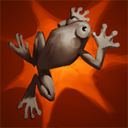 Hex
Hex. It's exactly what it sounds like - ********.
DIFFICULTY: 8/10. Tinker's reflex requirements are intense, and now that he can no longer farm ancients he's reliant on a good start to properly carry. Even though he's a massive prick, a good Tinker player does command respect in that regard.
Lategame Scaling: 4/5
Pushing: 4/5
Durability: 2/5, previously 4/5
Snowballing: 3/5
Farming Speed: 5/5
Mobility: 2/5 (5/5 out of combat)
 Ursa
Ursa
A big stompy bear that's more than happy eating your face as much as a pot of honey. Ursa is single-target focused, but has high burst at all stages of the game, albeit at the cost of mediocre natural attack speed. However, he is durable, and can be a daunting prospect to take down. A team charging into a farmed Ursa might just feed him a very quick kill or two...
DIFFICULTY: 4/10. No way Ursa's hard. Just need to rush a Blink and try and avoid kiting.
Lategame Scaling: 3/5
Pushing: 2/5
Durability: 4/5
Snowballing: 4/5
Farming Speed: 3/5
Mobility: 2/5
 Weaver
Weaver
There is not much to Weaver other than what was said in Section One - he is a high mobility, relatively low DPS, squishy carry who is a nuisance throughout the entire game. Harassing supports and picking off carries during the early game is your job, and you do it damn well. Weaver can mess up team positioning just by running in and
 Time Lapse
Time Lapseing away.
DIFFICULTY: 6/10. While squishy, Weaver suffers from no lack of escapes and is hard to pin down, especially once he gets a
 Black King Bar
Black King Bar.
Lategame Scaling: 2/5
Pushing: 2/5
Durability: 3/5
Snowballing: 5/5
Farming Speed: 2/5
Mobility: 5/5
 Wraith King
Wraith King
We've all seen him, we all know his ult. Free Aegis. To capitalise on being naturally one of the game's tankiest Heroes, Wraith King builds damage, but suffers from being low mobility and somewhat kiteable. If the game goes tits-up and you're in dire straits, remember the three Rs - Refresher, Rapier, 'Raith.
DIFFICULTY: 3/10. He's really damn easy, but there's something guiltily satisfying to playing Wraith King.
Lategame Scaling: 4/5
Pushing: 4/5
Durability: 5/5
Snowballing: 3/5
Farming Speed: 3/5
Mobility: 2/5
Playing a Carry
A lot of people say that mid is the hardest role.
Others say that supporting is.
In reality, all the roles in Dota are difficult in their own way. Carry is often considered the easiest, but the fact is, you have limited time and limited space to make as much gold as possible.
To do this, a good start is essential. Few carries can comfortably lane alone, and most that can are relegated to the midlane like  Shadow Fiend. Babysitting by supports is required. For this reason, it's best not to pick very weak laners like
Shadow Fiend. Babysitting by supports is required. For this reason, it's best not to pick very weak laners like  Spectre and
Spectre and  Anti-Mage unless you know that you have a good reliable support or two that can help you.
Anti-Mage unless you know that you have a good reliable support or two that can help you.
The first stage of playing a carry is picking the right one. To do this, look at what your team is lacking in, and what the weaknesses of the opposing team are.
Let us say, for example, that the opposing team is  Medusa,
Medusa,  Dazzle,
Dazzle,  Venomancer,
Venomancer,  Clockwerk and
Clockwerk and  Night Stalker. What are the strengths and weaknesses of this team, and as a result what is a good carry to pick against them?
Night Stalker. What are the strengths and weaknesses of this team, and as a result what is a good carry to pick against them?

Answer
The above team has strong pickoff potential, but suffers from a weak midgame. However, their early- and late-game are very strong, meaning you will want to finish rather quickly.
To do this, you want to pick a carry who has good midgame and is resilient to early-game ganks. In situations like this, a
 Meepo
Meepo would be a good pick, or perhaps a
 Slark
Slark.
 Weaver
Weaver is not recommended, as he gets completely shut down by
 Night Stalker
Night Stalker and
 Clockwerk
Clockwerk.
Another approach is to stall the game and then splitpush, as this team has very little that can stop splitpushing once their pickoff potential falls off. Therefore, carries like
 Lycan
Lycan,
 Anti-Mage
Anti-Mage or
 Morphling
Morphling would work well. While it may seem like
 Terrorblade
Terrorblade could fit here with the added benefit of fighting if necessary, his illusions are too easily destroyed by
 Medusa
Medusa and thus most of his damage goes. Special props to
 Morphling
Morphling, as he will be hard to pick off even in the early-game.
If your team is lacking in stuns, consider
 Wraith King
Wraith King or
 Sven
Sven. If you need to shut down a single Hero,
 Doom
Doom is a great choice, or simply burst them down with
 Phantom Assassin
Phantom Assassin or
 Chaos Knight
Chaos Knight.
To really specialise in a Hero, a nice set of cosmetics can help (no, really). Taking pride in the appearance of a Hero makes you want to do better as said Hero, therefore more effort. It also looks damn cool.
Hi, Terrorblade.
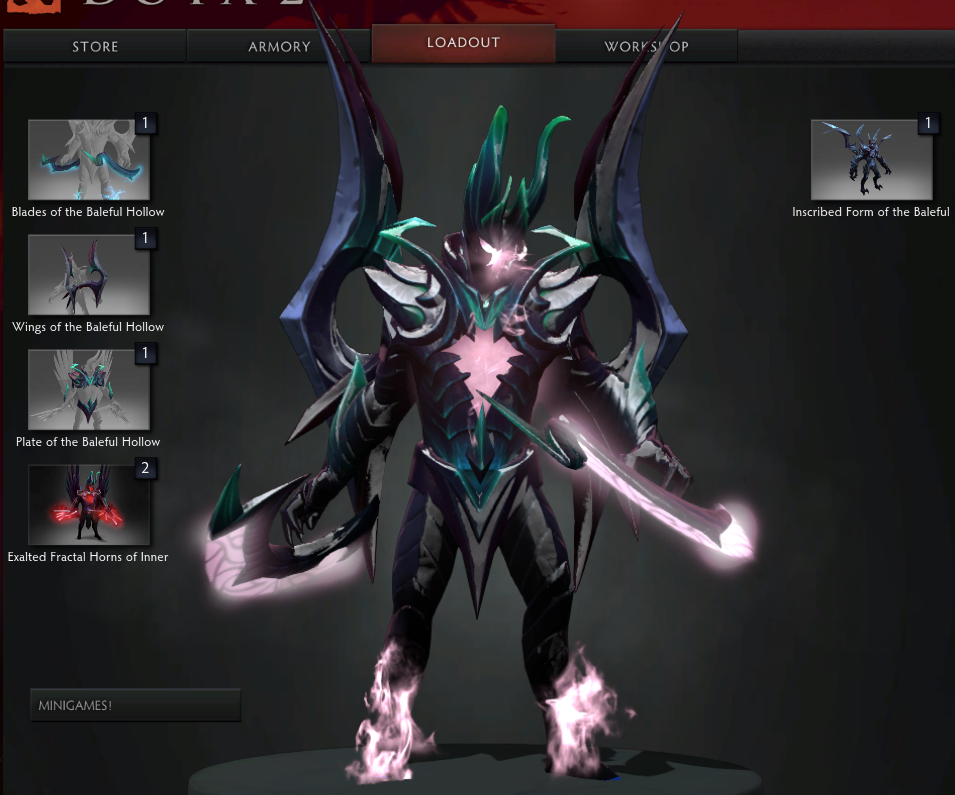
<I have this set in red, truly gorgeous
Farming: The Lane
You're going to spend a LOT of time in one of these. There are a few points to remember about the lane:
1) Last hitting
2) Creep equilibrium
3) Vision - this does NOT mean spamming >We need wards.
Last hitting is a simple concept that pretty much everyone in Dota knows. Get the killing blow, get gold. There are details of this that apply very much to carries, however.
I'm now going to explain attack animations and their importance.
Let's look at Anti-Mage. Here is a gif representing his animation:
In text form, this is expressed as 0.3/0.6.
Basically, your animation is comprised of two sections: the frontswing and the backswing. The frontswing is the time after the attack command is issued before the damage is dealt; the backswing is the Hero's period of inactivity after the attack lands. Described by the wiki as 'a delay between the damage point of an attack and when another queued command will be performed'. Visually, this is usually the character recovering their position, as such:

Note that your backswing can be CANCELLED. This is EXTREMELY important to remember, especially on Heroes with sluggish animations like Luna. While cancelling the backswing does not increase your attack speed, it removes the period of inactivity after an attack, allowing you to move. Doing this has numerous terms, such as 'stutterwalking' or 'orbwalking' (the latter being a misnomer, as orbwalking refers to the act of manually casting an autocast ability such as  Searing Arrows so as not to draw aggro from the creeps). In function, this allows for better chasing and often can secure very close kills. To cancel your backswing, wait until the attack has landed then issue an immediate move command in the direction you want to go. Once in range, attack again. To see this in action, I recommend watching professional players on Heroes like the aforementioned
Searing Arrows so as not to draw aggro from the creeps). In function, this allows for better chasing and often can secure very close kills. To cancel your backswing, wait until the attack has landed then issue an immediate move command in the direction you want to go. Once in range, attack again. To see this in action, I recommend watching professional players on Heroes like the aforementioned  Luna, or on melee Heroes like
Luna, or on melee Heroes like  Sven.
Sven.
However, the frontswing cannot be cancelled, and attempting to do so will abort the attack. As such, it is wise to familiarise yourself with the animations of many Heroes, as the attack animation is an important part of lasthitting.
Maintaining creep equilibrium is a very important part of farming a lane. Most commonly, you will see 2v2 lanes in pubs, which makes it extremely difficult to farm at optimum efficiency and often you will have to throw this concept to the wind. However, in higher levels of play when trilanes and solo offlanes start being a thing, remember this.
The old adage of 'carries last hit, supports deny' is technically wrong. If the carry is freefarming, the support should not be touching the creeps - and not in the lane at all, they're better served stacking, pulling or ganking.
Your goal when maintaining creep equilibrium is to keep the creep wave just out of range of your tower by 150-250 units. The image shows a good spot to keep it on the Radiant side, and the Dire side is mirrored.
To do this you must try and make the different creep waves die at the same time. This is a combination of autoattacks, aggressive denying and sometimes leaving enemy creeps alive to better control the lane. I personally am a fan of leaving an enemy siege creep alive so the lane pushes slightly in my direction, allowing me greater freedom in pushing against it in case the creeps do something unexpected.
The best way to practice this is to go in a lobby on your own and just roll with it.
Another reason for keeping creep equilibrium in one spot is to reduce the threat of ganks. The image above is just outside of tower range, ensuring that anyone wanting to kill you is going to have to dive your tower, often a risky endeavour. The more pushed up your lane is, the easier it is for you to get ganked and the harder it is for allies to gank your lane.
Farming: The Jungle
Here is where advanced farming techniques come into play, and a lot of it is just feel.
There are a number of items in Dota that assist with farming:
- Helm of the Dominator
Helm of the Dominator
- Radiance
Radiance
- Battle Fury
Battle Fury
- Maelstrom
Maelstrom
- Hand of Midas
Hand of Midas
That said, most items in the game contribute to farming, but these five are the main items bought solely for the purpose of farming. Each has different uses.
 Battle Fury is popular on Heroes with the ability to quickly move around the jungle and clear camps at lightning pace. See
Battle Fury is popular on Heroes with the ability to quickly move around the jungle and clear camps at lightning pace. See  Anti-Mage - his low-cooldown Blink means that he can quite easily clear two lanes and the whole jungle in under a minute. A similar principle applies to
Anti-Mage - his low-cooldown Blink means that he can quite easily clear two lanes and the whole jungle in under a minute. A similar principle applies to  Phantom Assassin but it's better to buy fighting items on her to make use of her midgame powers. Aim for 12-16 minutes to get this item, or just don't bother.
Phantom Assassin but it's better to buy fighting items on her to make use of her midgame powers. Aim for 12-16 minutes to get this item, or just don't bother.
 Radiance is usually bought on Heroes who make illusions. Why? Because illusions carry the burn aura from
Radiance is usually bought on Heroes who make illusions. Why? Because illusions carry the burn aura from  Radiance. On its own, Radiance is a slow farming tool, because 50 DPS to nearby creeps isn't that much compared to other items. However, if you can extend this burn aura over a large part of the map... imagine the outcome. Very popular on
Radiance. On its own, Radiance is a slow farming tool, because 50 DPS to nearby creeps isn't that much compared to other items. However, if you can extend this burn aura over a large part of the map... imagine the outcome. Very popular on  Naga Siren and
Naga Siren and  Spectre, the latter of who also gets the benefit of owning early teamfights with her ultimate. Aim for 17-22 minutes to get this item, or just don't bother - with one exception: for the purpose of cancelling
Spectre, the latter of who also gets the benefit of owning early teamfights with her ultimate. Aim for 17-22 minutes to get this item, or just don't bother - with one exception: for the purpose of cancelling  Blink Daggers.
Blink Daggers.
NOTE: To use a Radiance, simply move near to jungle camps and the burn aura will farm the creeps for you. Throw in a few right-clicks and voila, 500 gold in 20 seconds.
Please don't ever buy this on  Terrorblade.
Terrorblade.
 Maelstrom is that odd combination of fight and farm. The lightning decimates creeps and Heroes alike and it is a very cost-efficient damage item. I am a big fan of this on
Maelstrom is that odd combination of fight and farm. The lightning decimates creeps and Heroes alike and it is a very cost-efficient damage item. I am a big fan of this on  Phantom Assassin and we all know how good it is on
Phantom Assassin and we all know how good it is on  Faceless Void. Generally, it's not worth upgrading to
Faceless Void. Generally, it's not worth upgrading to  Mjollnir until much later in the game.
Mjollnir until much later in the game.
 Helm of the Dominator is an item less-commonly seen as a farming item. It's usually bought on
Helm of the Dominator is an item less-commonly seen as a farming item. It's usually bought on  Luna or
Luna or  Gyrocopter to control a creep and use it to stack the Ancients before farming them. However, even on Heroes with no way of farming Ancients, it can be used of its own.
Gyrocopter to control a creep and use it to stack the Ancients before farming them. However, even on Heroes with no way of farming Ancients, it can be used of its own.
First, dominate a Wildwing Ripper. Find the nearest hard camp to your base. Stack that 3-5 times, then use the Ripper's tornado ability to clear it. Repeat over and over, sending the Ripper back to base when necessary. This can net you a lot of gold over the course of a game, especially if you have supports helping you with the stacking. This technique works well on Heroes who need a lot of gold but do not benefit from any of the other farming items, such as  Chaos Knight.
Chaos Knight.
 Hand of Midas is the most controversial item in the game (probably). For it to be effective, it has to be *rushed*, often before boots. It is good on gold and level dependant Heroes, and is best used on large creeps like the Satyr Tormentor. If you can't get this around the 8-minute mark or earlier, seriously reconsider.
Hand of Midas is the most controversial item in the game (probably). For it to be effective, it has to be *rushed*, often before boots. It is good on gold and level dependant Heroes, and is best used on large creeps like the Satyr Tormentor. If you can't get this around the 8-minute mark or earlier, seriously reconsider.
Often when jungle farming, it's a good idea to pick up a  Quelling Blade. This allows you to cut down trees and farm multiple creep camps at once. It also grants bonus damage to creeps, and is very cheap. What's not to love?
Quelling Blade. This allows you to cut down trees and farm multiple creep camps at once. It also grants bonus damage to creeps, and is very cheap. What's not to love?
Don't, however, spend all of your time in the jungle. Go into lanes and push them, taking a tower if the opportunity arises. Often people will call out 'rat dota' in a tone reminiscent of hate speech but you just got an easy 500 gold so what do you care?
Conclusion
Why do people play carry?
Perhaps it's for revenge against those creeps for all the times they've blocked your way or gotten you killed.
Perhaps it's the thrill of leading your team in the lategame and throning your opponent.
Perhaps it's that addictive sound of money clinking with every kill.
Perhaps a combination of all three.
I hope this has helped someone. As usual, don't hesitate to point out things that I've missed or anything I should clarify further.
I'll leave you with a final piece of advice; no matter how good of a carry player you are, if your team already has some, they'll be better served by a support. 5-carry teams never work.
Now holla holla get some dolla.


















 Answer
Answer <I have this set in red, truly gorgeous
<I have this set in red, truly gorgeous



Quick Comment (35) View Comments
You need to log in before commenting.